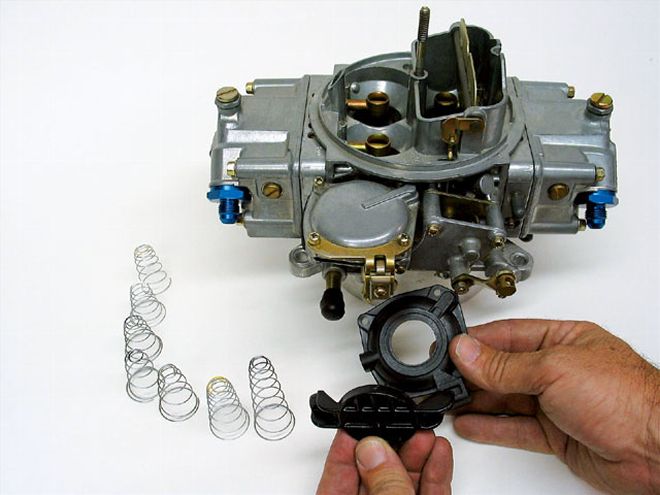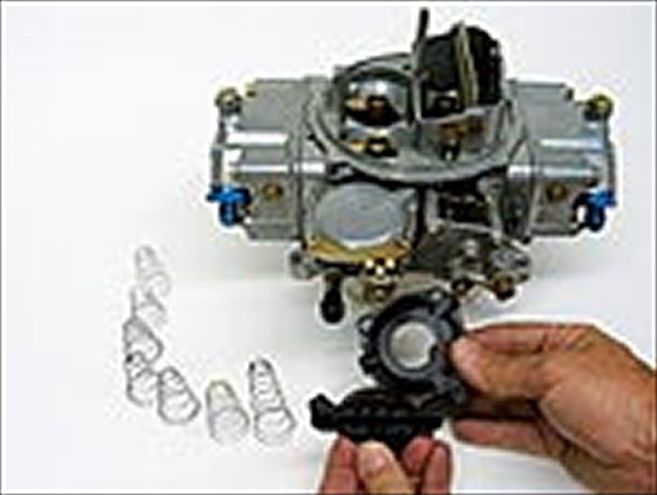


The hot tip in diets now is low-carb and Atkins friendly. But when it comes to carburetors and power, we're all in favor of loading up on carbs and tuning them to work their best. To this end, we thought we'd assemble a stack of carb-loading recipes, tech tips, small parts recommendations, and other suggestions for Holley, Q-jet, Edelbrock, and Demon carburetors that you can use to transform that lump into a lean mean, carbureting machine.
Check WOTCheck what? A simple test that could be worth 10 hp is to merely check to make sure your carb linkage actually achieves wide open throttle (WOT). Have your buddy jump in the car, and with the engine off (do we have to tell you that?), have him hit the throttle while you make sure the carb opens fully. In addition, for older musclecars with solid linkage, you could make a slick link with spherical rod ends at either end for more precise operation.
Leak DetectingAn engine tuner once told us that 90 percent of all driveability problems could be traced to vacuum leaks. If your street motor is suffering from part-throttle hiccups or the lean-surge blues, take a few minutes to search for a vacuum leak, first make sure all the carb and intake-manifold bolts are tight. Also make sure all the vacuum outlets on the engine are closed off and that all vacuum lines are intact. It's common to discover a rubber vacuum plug is missing or cracked. If everything is secure, start the engine, warm it up, and shoot short squirts of WD-40 around the intake and the carb and listen for a change in idle speed. If you locate an area where the engine speed increases when you hit it with WD-40, then you've found a vacuum leak. The engine speed increases because the leak pulls the WD-40 into the engine and burns it, temporarily increasing engine speed. This can make a mess that will have to be cleaned, but it works to locate hard-to-find vacuum leaks.
Component Price PN B hanger, (0.520) 1960 $3 G hanger, (0.545) 1961 $3 K hanger, (0.565) 1962 $3 P hanger, (0.590) 1963 $3 V hanger, (0.615) 1964 $3 Secondary rods, CC (0.300) 1950 $7 Secondary rods, CE (0.410) 1951 $7 Secondary rods, CK (0.527) 1952 $7 Secondary rods, AY (0.567) 1953 $7 Secondary rods, CL (0.667) 1954 $7